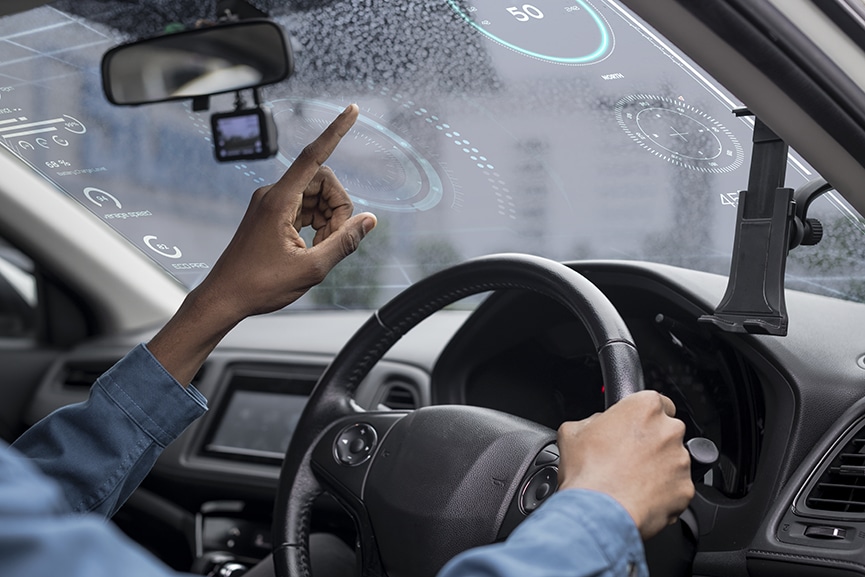
#Industry News
V2X technology and its impact on road traffic
The "Internet of Things" is already on our streets and roads
Perhaps on more than one occasion you have the feeling that the smart devices in your home are talking to each other. Recently, research has shown that when one of these devices connects to the wifi network in our home, it recognises the other devices and collects information and data from them.
This "communication" is not only happening between the devices we have at home, but the so-called "Internet of Things" is also present on our streets and roads. One of the technologies that is changing our experience and improving road safety is V2X technology.
In this new post we are going to explain what V2X is, what it is used for and the advantages it brings to both drivers and pedestrians.
What is V2X technology?
Have you ever wondered if cars "talk" to each other and to traffic lights and other road signs? The answer is yes. But only so-called "connected cars" can do it. This type of car is a vehicle that has built-in mobile technology, so it can connect to its environment via the Internet. The technology that enables this communication is V2X technology.
We can say that V2X, or Vehicle to Everything, is like a "secret language" between cars (V2V), between cars and road infrastructures (V2I) as well as between vehicles and pedestrians (V2NP).
Vehicles with this technology integrated can "talk" to each other, to road signs and to other elements in their environment, thus improving road safety and efficiency on our roads.
How does it work?
While you are driving, if your car is equipped with this system, your vehicle communicates with traffic signs and other nearby cars. For example, if there is a traffic jam a few metres ahead, your vehicle knows about it and warns you. How is it possible for your car to know this information? Thanks to the communication established between your vehicle and other cars that have this technology installed.
We will explain the differences between the different types of V2X systems that exist:
V2V (Vehicle to Vehicle): this technology enables cars to exchange information with each other, sharing information about their speed, location, position ... For example, two vehicles approach a junction, the connected vehicles exchange information via V2V, alerting each other about their position and speed. If there is a risk of a collision, drivers are alerted, allowing them to make the most appropriate decision to avoid the collision.
V2I (Vehicle-to-infrastructure): this type of system allows the exchange of information between vehicles and traffic signs. As an example, imagine your vehicle is approaching a traffic light, this technology allows communication between your car and the traffic light. The traffic light can adjust its timing in real time according to the flow of traffic, reducing waiting times.
V2P (Vehicle to Pedestrian): facilitates communication between cars and pedestrians. For example, a pedestrian carries a V2P device, his smartphone, while crossing a street, his smartphone exchanges information with V2V and V2P-equipped cars, and drivers are alerted that there is a pedestrian on the road, allowing them to make decisions such as slowing down.
V2N (Vehicle-to-Network): enables vehicles to connect to the Internet, which facilitates information gathering and data exchange with traffic control centres, for example.
Advantages of V2X:
The main advantage, or one of the main advantages, of this technology is that it can help prevent traffic accidents by providing up-to-date information on road conditions, traffic volume or weather information.
The following are some of the benefits that V2X can have on road traffic:
Improves safety: by enabling vehicles to communicate with road signs and other cars, it can help prevent accidents such as collisions or other dangerous traffic situations.
Increases traffic efficiency: communication between vehicles and traffic lights, for example, can reduce congestion and improve the flow of road traffic.
Improves driver experience: V2X technology can provide real-time information on traffic conditions, road hazards and other useful data to drivers, which can help them make informed decisions and stay safe on the road.
Helps reduce emissions: By optimising traffic flow, C02 emissions can be reduced by reducing waiting times and unnecessary stops.
RSUs and OBUs, what are they?
V2X technology needs the help of other systems such as RSUs (Roadside Units) and OBUs (On board Units) to work. These are two key technologies in V2X communication systems.
RSUs are nothing more than devices installed on the street such as traffic lights, traffic signs or street lamps. These elements are usually connected to wifi and allow communication between cars and the different traffic infrastructures.
OBUs or On-Board Units are devices that are installed in vehicles. The function of OBUs is to communicate the car with the traffic light, which has the RSU (Roadside Unit) installed, for example. OBUs can send and receive data related to speed, location or other vehicle parameters. Also, it can process the information it receives from the outside, make automatic decisions, and thus avoid a possible traffic accident.
As we can deduce, the implementation of V2X together with RSU and OBU technologies has very positive impacts on our daily life, and above all, on our daily driving. RSU technology is installed in traffic lights, traffic signs and poles, which send information to vehicles with OBUs installed. This means fewer accidents and less traffic jams. In short, faster and safer journeys for everyone.
The industrial PCs that we market in Grupo EOS Ibérica are compatible with this type of technology. Contact us now, our sales team will guide you on the industrial component that best suits your needs.







